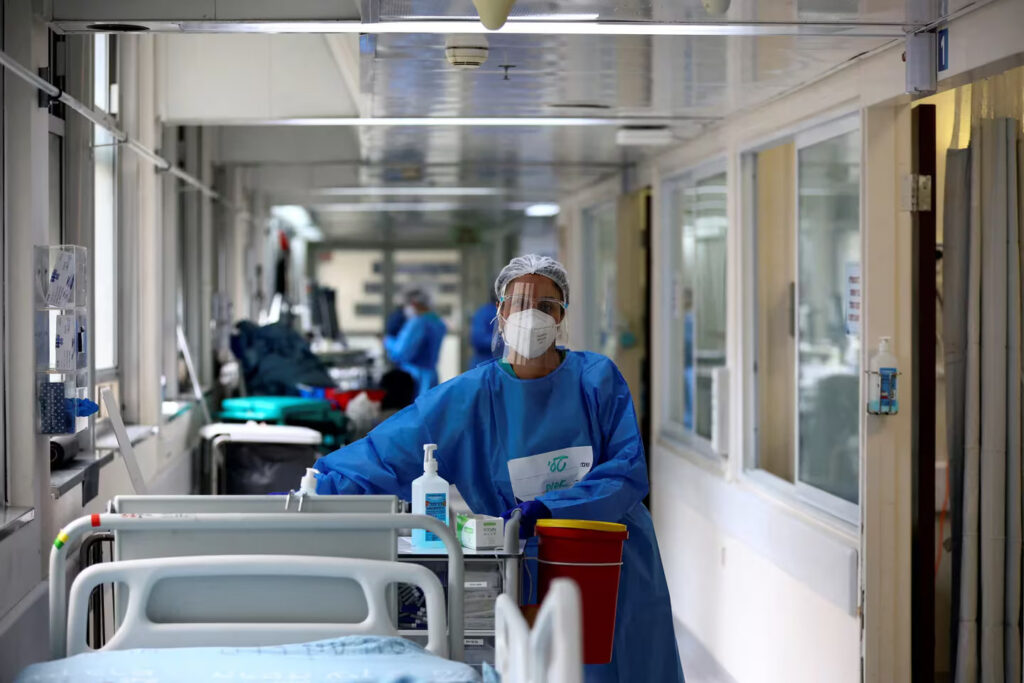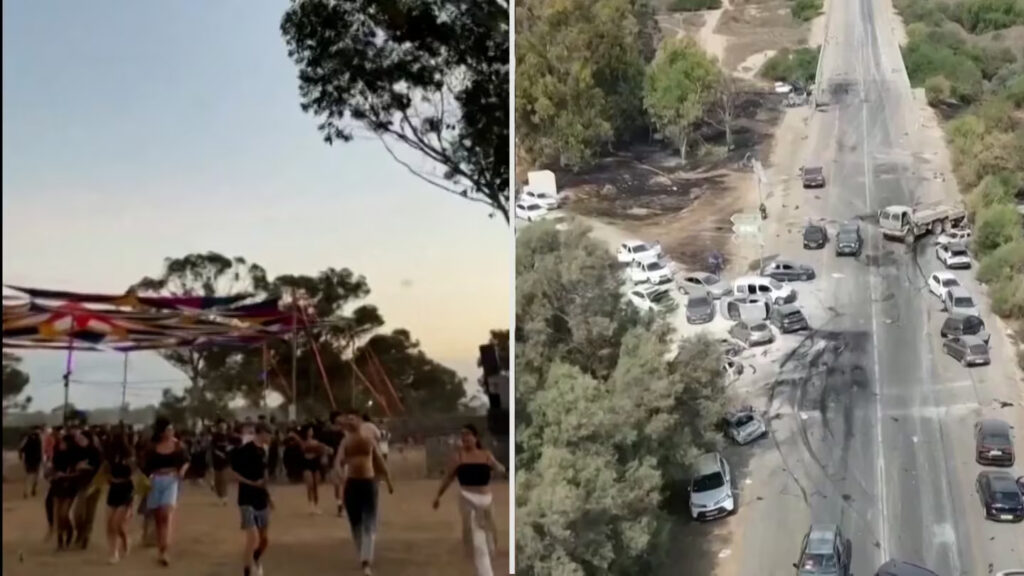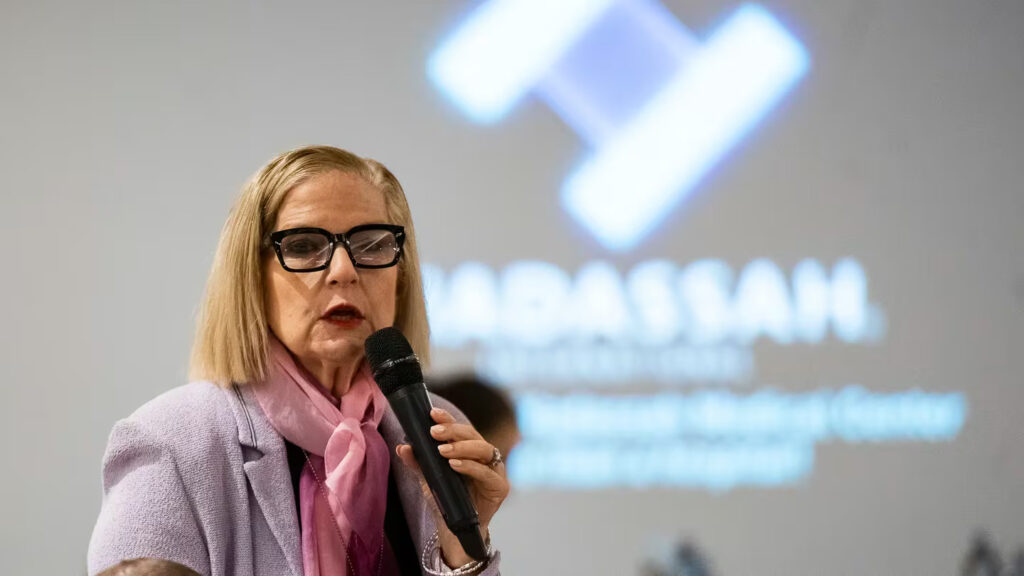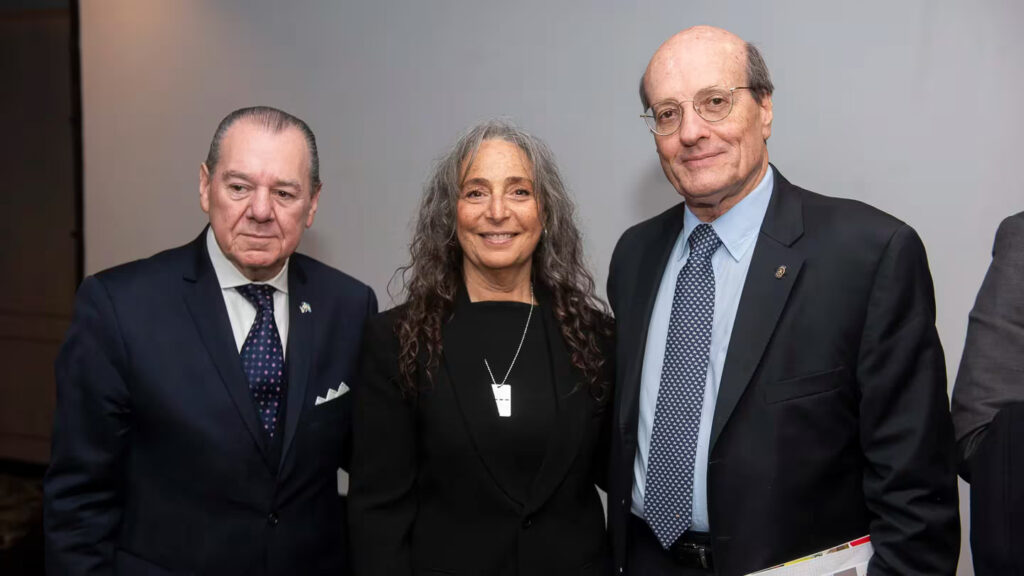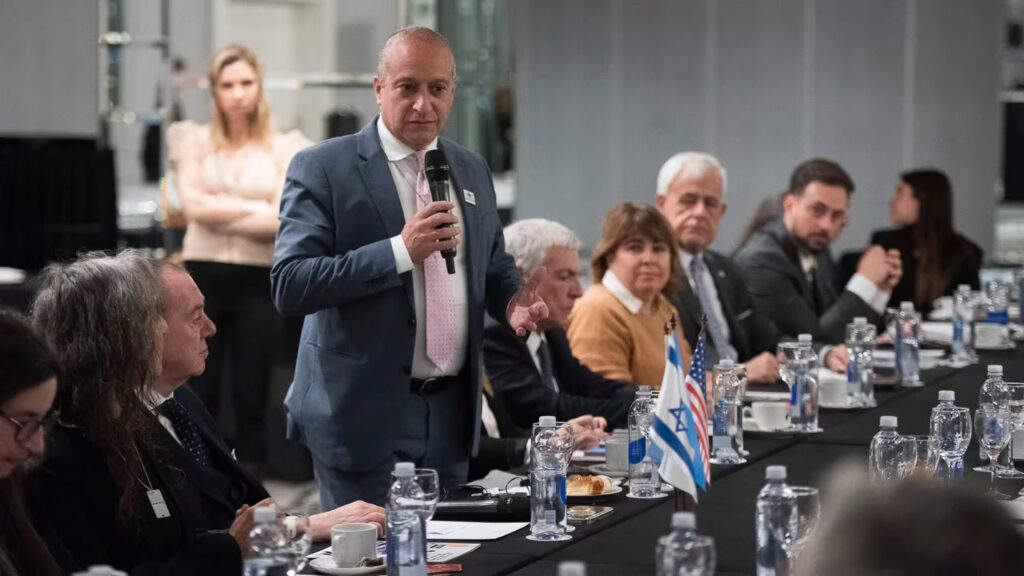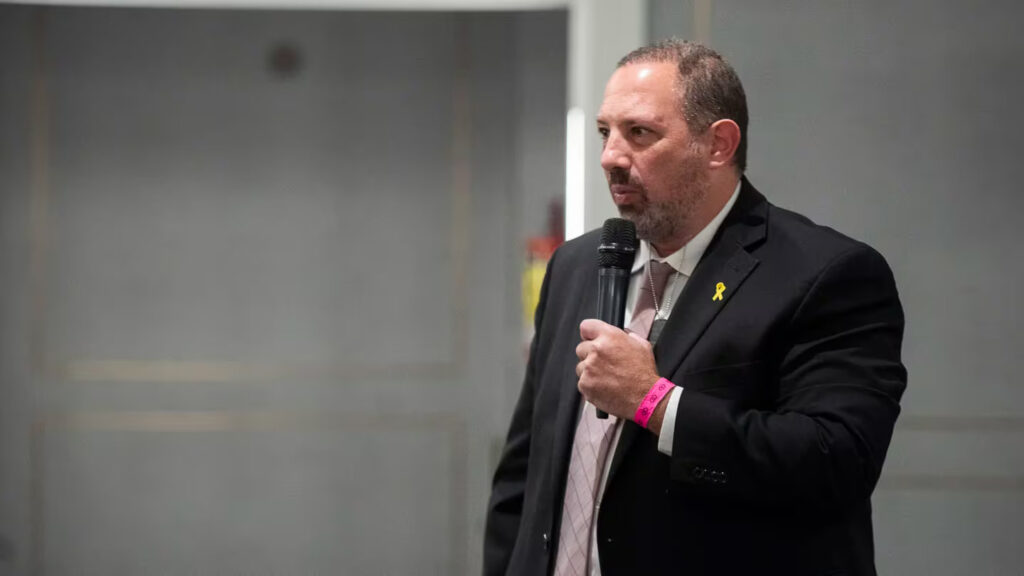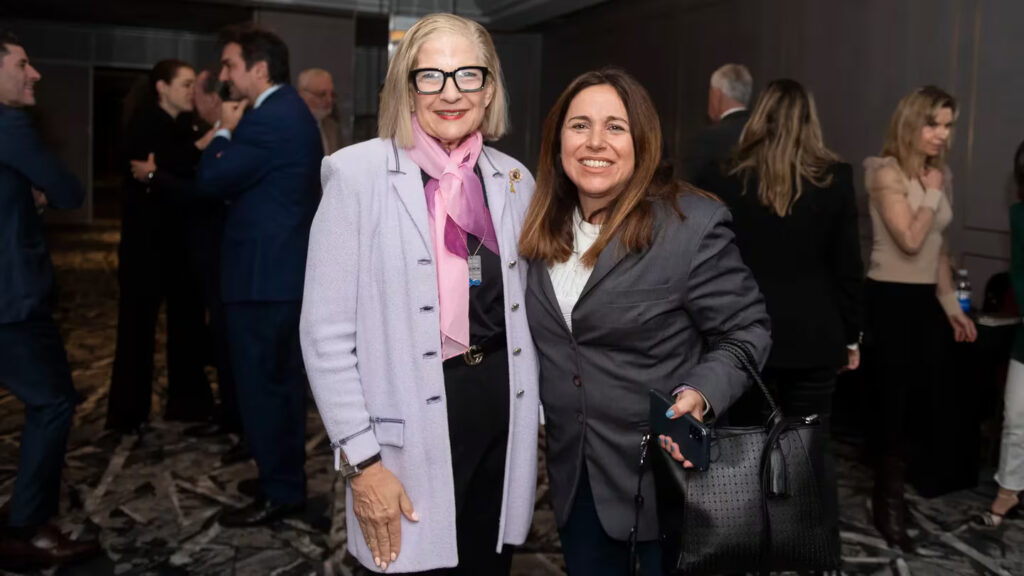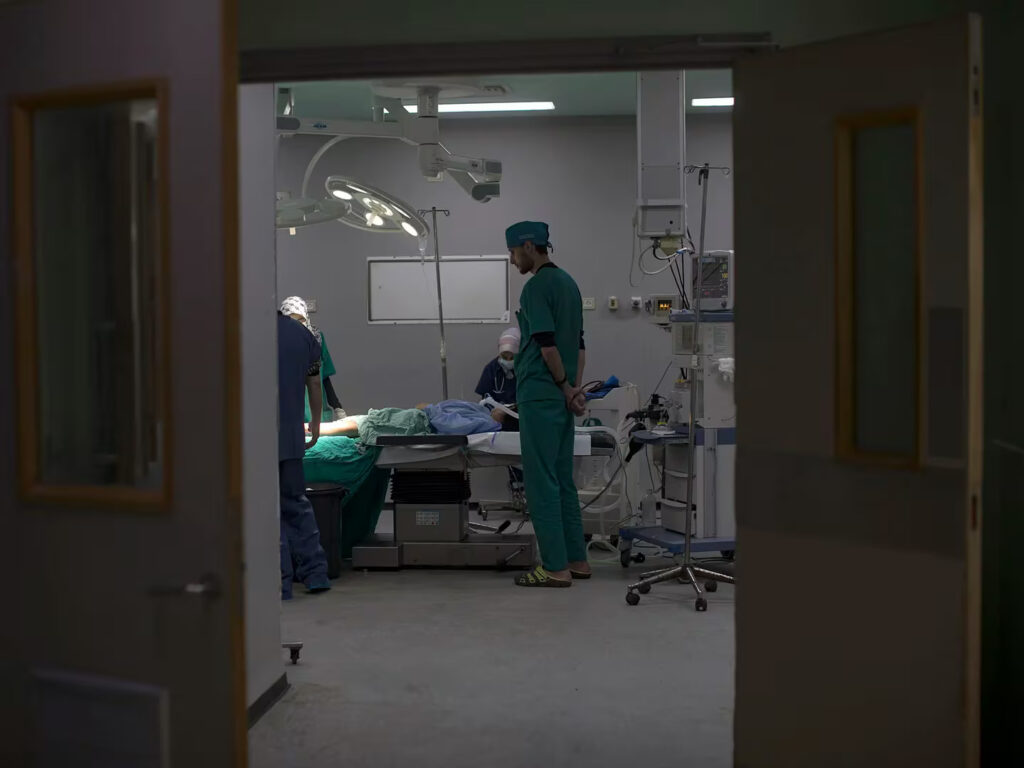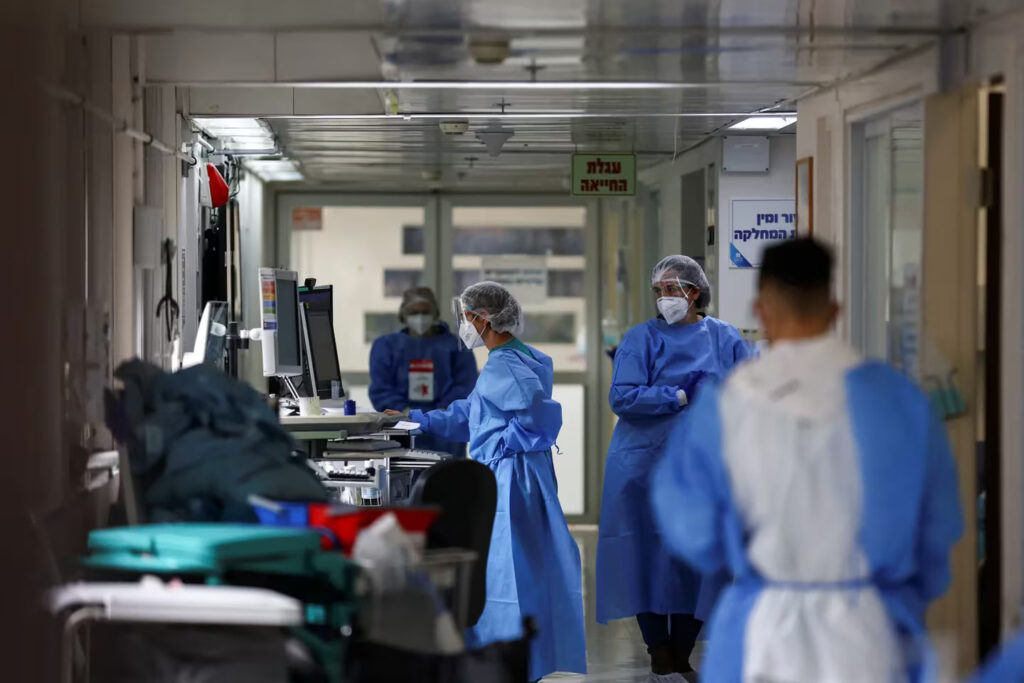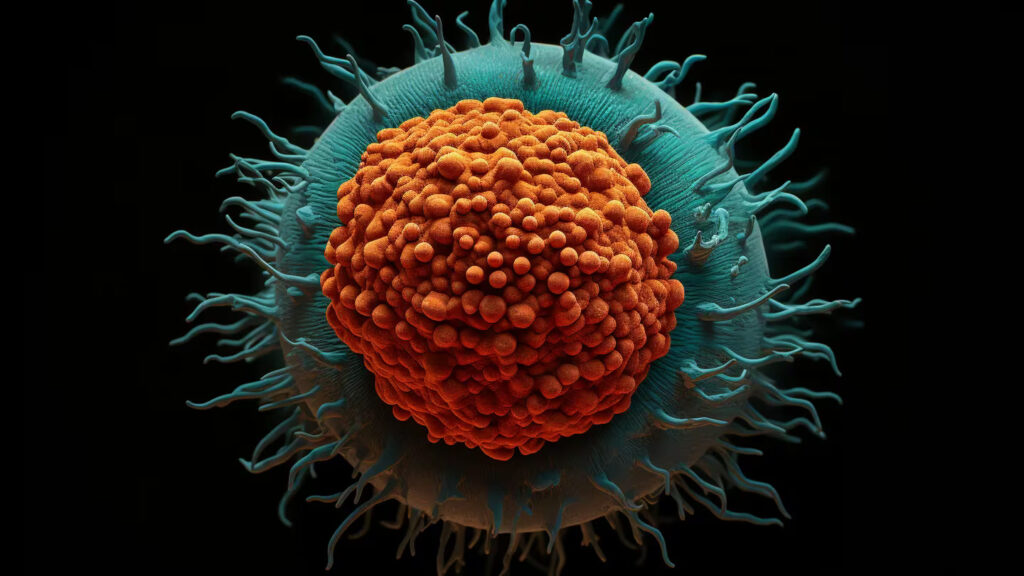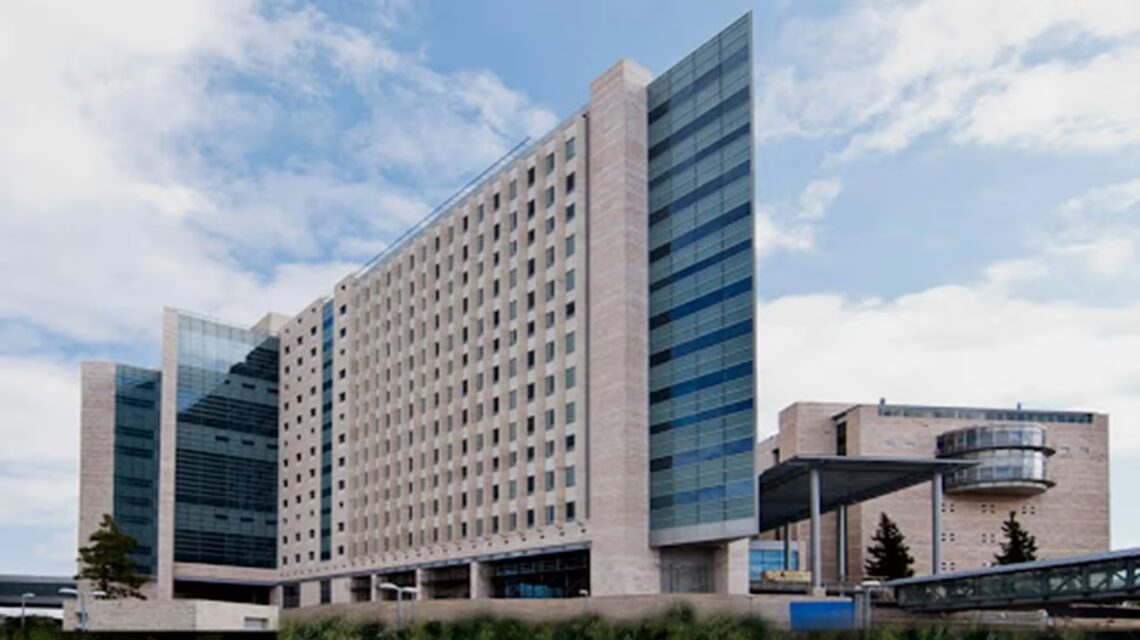
Hadassah Hospital, founded in 1934 by the Hadassah Women’s Zionist Organization of the United States, has been an essential part of the health system in Israel for almost 100 years, with a humanitarian mission that transcends the country’s borders to reach the wider world. Infobae talked to its people.
Can a hospital have a different DNA from the rest of the hospitals in the world? Yes. That is the starting point. “Vigorous, inclusive and innovative” are at the heart of the identity of Hadassah Hospital in Jerusalem. Its makeup goes beyond hard science, since it sees itself as a force for global healing with an impact beyond Israel’s own borders.
Its formal name is Hadassah Medical Organization (HMO) and it is an indispensable part of the healthcare ecosystem in Israel. This is why Hadassah – like no other medical institution – is able to synthesize knowledge and scientific advances with a profound humanitarian sense. Without ideological, ethnic or religious distinctions. The motto, which guides each of its actions, is: “Build peace through health.”
That peace was disrupted on on October 7, 2023, when the terrorist group Hamas stormed and attacked the people of Israel with extreme violence, turning this iconic hospital into an indispensable source of medical care and logistical support center for the entire country.
“Hadassah has always been considered an emblematic center of medicine and innovation for the world, but Hamas’ bloody incursion into Israeli territory has added other priorities,” Mario Montoto, president of the Argentine-Israeli Chamber of Commerce and of the TAEDA Foundation, explained to Infobae. “Clearly, October 7 was an attack against humanity,”
In line with his recognition of Hadassah, Montoto – together with prominent personalities from science, culture, industry and the media – this week hosted the visit to Buenos Aires of Carol Ann Schwartz, president of the Hadassah Women’s Zionist Organization (HWZOA), the medical institution’s founding body. “The horror unleashed by Hamas last October 7 was an inhumane attack that must be strongly condemned. Hadassah Hospital has become a center of support for all of Israel; and currently with the war in Gaza, the conflict has become a priority, attending to the horror of the wounded,”a visibly moved Carol Ann told Infobae.
The Israeli Hadassah Hospital stands out for the humanitarian aid it provides and its tireless project to maintain its model of coexistence between Israelis and Palestinians, among others. With its thousands and thousands of volunteers, philanthropists and agents of change around the globe – and from Israel to the world – it works to bring relief and well-being to the neediest communities, since its mission of healing transcends the medical and encompasses all aspects of the human condition.
Inside its walls, cutting-edge research is being carried out to find cures for ALS and Alzheimer’s disease, and to develop the latest advances in the fight against cancer, kidney disease, while mRNA vaccines against melanoma and other diseases are also being promoted.
What motivates each of the doctors and nurses at Hadassah? asked Infobae.“Bringing health to the world and creating more and more life-saving research,” replied Jorge Diener, executive director of Hadassah International. “Israel is part of today’s troubled world. It is a deeply challenging time. And without a doubt, after the terror of Hamas on the people of Israel, Hadassah Hospital has re-launched symbol of innovation and humanism,” said Diener.
Training is a strategic point for the hospital because it is part of its organizational identity linked to service. This emphasis infuses the humanitarian approach, since it encourages doctors trained at Hadassah to work around the world with their vocation and knowledge on their shoulders, and reciprocally, for other doctors to pass through and be trained in its corridors. It is an approach whose implementation earned Hadassah Hospital a nomination for the Nobel Peace Prize in 2005.
Currently, 55% of the research in the medical ecosystem conducted in Israel comes from Hadassah. It is a model that receives funding from the Israeli government for specific projects, but depends mainly on charitable donations from all over the world.
In an interview with Infobae, HWZOA president Carol Ann Schwartz said: “Medicine is the only field that truly crosses all borders, since this is the instrument that allows saving lives and curing diseases such as Alzheimer’s, ALS and cancer, among many others. But that’s not all. Within its philosophy, its special focus on pediatric medicine stands out. It uses this to establish a path for change and hope for the future, especially in these times of conflict”.
Schwartz is a member of a family with four generations of Hadassah ties. With more than 30 years of service to the organization, she has taken on leadership roles in Cincinnati, USA, on the board of directors of the city’s Jewish Federation, the Jewish National Fund, and the University of Cincinnati Hillel, among other projects. Since the Hamas attack, she has also led Hadassah’s EndTheSilence campaign, which raises awareness of sexual abuse as a weapon of war against Jewish women and calls on the United Nations (UN) to condemn these acts.
The return of terror
That indelible Saturday of October 7, the terrorist group Hamas launched a surprise attack from Gaza on the Nova festival, and unleashed an offensive by land, sea and air. Although it is difficult to calculate the numbers (even today, there are still bodies that have not been recovered), the bloody events produced about 360 people killed, more than 250 kidnapped and about 900 injured – within just a few hours. Rockets intercepted in the sky, damaged buildings, communities on alert and the open, unhealable wound of two peoples confronted by war were part of an escalation of violence that still continues.
“Argentina has included Hezbollah in the list of terrorist organizations and maintains a firm commitment to the prosecution of terrorist financing,” Mario Montoto told Infobae. “In addition, our country leads the fight against anti-Semitic hatred in the region as the only Latin American nation that is a member of the International Holocaust Remembrance Alliance.”
Hadassah Hospital is a leading research powerhouse in Israel and attracts the largest percentage of government funding for research. “Among its numerous scientific and medical projects, the construction of the 26,000-square-meter, state-of-the-art Gandel Rehabilitation Center (GRC) on Mount Scopus stands out. The Gandel Center uses the latest robotic and NASA technology in rehabilitation for people with limb and other impairments following strokes or cardiac events. Currently, with its three floors completed, the Gandel Center practically functions as a field hospital to treat war wounded. “Healing the world is an ambitious goal and that is where we are going,” Schwartz told Infobae.
Hadassah operates a global network of volunteers spanning five continents. For example, it has agreements with hospitals and health authorities to assist with its expertise in Argentina, Australia, Brazil, Panama, Italy, Spain, Japan, China, Canada, the United States, Costa Rica, Cuba, France, Germany, Hungary, Mexico, Russia, Switzerland and Turkey, among others.
Consulted by Infobae, Fanny Ribak, Director of Development at Hadassah International for South America pointed out: “Hadassah Hospital has multiple reciprocity agreements, and joint work in scientific, medical and training projects for professionals from different disciplines. When we choose institutions to cooperate in scientific projects, we start working first and then we sign the agreements because we know that humanitarian institutions take time to formalize their joint work and we do not want rubber stamps, but real work”, assured Ribak to Infobae.
Ribak added: “In the Argentine case, we established agreements with two renowned Argentine institutions, CEMIC and the Austral Hospital. With both, we achieved very good results in various fields of cooperation during the COVID pandemic. And with CEMIC, we continue the agreement to this day.”
With volunteers on five continents, the organization builds bridges between nations through medicine. Alejandro Kelman, president of the Hadassah Foundation Argentina, referred to this idea: “The philosophy that drives Hadassah’s work is defined as Tikun Olam, which means ‘to heal the world’. It implies that the knowledge generated in Hadassah is shared with the world to help all countries and all hospitals”.
In Israel, Hadassah operates two university hospitals, one in the Ein Kerem neighborhood of southwest Jerusalem and the other on Mount Scopus, in the northeastern part of the country’s capital. Both health centers are part of the Hadassah University Medical Center and have more than 1,300 beds, 31 operating rooms, nine specialized intensive care units and five schools for health professionals, which are affiliated with the Hebrew University of Jerusalem.
Hadassah Ein Kerem University Medical Center serves as the main hospital for Israel’s capital and provides medical services to the surrounding area. It is one of the most modern in Israel and has units that perform tests and treatments in all fields of medicine combined with advanced medical and imaging equipment. The southwest Jerusalem facility focuses on tertiary medicine, i.e. practices that take place after an illness or condition has occurred, and many of its physicians have been trained or specialized in the best hospitals in Israel.
Meanwhile, Hadassah Mount Scopus Hospital, on the campus of which the Rehabilitation Center is located, is a first-rate community medical center and serves the special needs of the large area of northern Jerusalem.
Hadassah offers an extensive network of satellite services, including community health programs, specialized outpatient clinics and services in neighboring towns and villages.
The Hadassah Medical Organization (HMO) has played a crucial role in Israel’s medical history and is recognized for its equal treatment of all patients, regardless of their ethnic and religious differences. It has been a pioneer in several medical areas, including the opening of a fertility clinic for AIDS patients in 2009 and the opening of the Sarah Wetsman Davidson Hospital Tower in 2012, with 500 beds and 20 operating rooms.
Kelman reinforced to Infobae: “In Argentina, we have made agreements with several public and private hospitals to help them benefit from all the knowledge in the Hadassah matrix. It is about sharing and improving the professionals from Argentina that we send to Israel for training. We also bring doctors from Israel to give lectures and, at the Hadassah Foundation Argentina, we work very closely with hospitals, with the Ministers of Health of all the provinces, as well as nationally, to exchange knowledge and professionals on medical issues”.
Inside the Gandel Rehabilitation Center
The Gandel Rehabilitation Center (GRC), whose construction and outfitting are not yet finished, opened its doors for the first time on January 15 and is gradually moving forward with the essential and ambitious objective of providing hope and healing to the war wounded, both civilian and military. So far, only three of its eight floors are finished.
It is located within the grounds of the historic Hadassah Mount Scopus Hospital. With a monumental investment of US$ 132.6 million, six months after its inauguration, this state-of-the-art center has already become a beacon of innovation in Jerusalem. Made possible thanks to the contribution of the Gandel family of Australia and numerous other donors, it aims to care for thousands of patients each year with advanced treatments in a custom-designed recovery environment.
Jorge Diener said of the brand-new Gandel Rehabilitation Center (GRC): “We use NASA technology and robotics. Hadassah has been healing the world for almost 100 years and creates medical technologies to find cures for diseases that still have no cure. It cures everyone without political posturing.”
How do you explain what happens at Hadassah? “It is a human project that deals with the future of medicine and instills that in those who are trained and work there. Today, in the rehabilitation center, thousands of people wounded by the war in Gaza are treated; there are some who live there for six months until they recover,” said Diener.
“At present, in rehabilitation, we can care for 100 patients at the same time and for three months; but when the building is finished we will be able to care for 500 patients. We still have an infrastructure deficit,” he said.
The facility has specialists and equipment to treat brain, spinal cord, nerve, muscle, bone, cancer, stroke, limb loss and geriatric injuries. The building includes an underground emergency hospital with 130 high-complexity beds and is also Israel’s first institution for war wounded that includes hospital care, occupational therapy, physiotherapy, therapy and hydrotherapy, using the most advanced technologies in a field that combines physical and emotional therapy.
“Rehabilitation goes beyond medicine. It is an emotional journey shared by our patients and staff,” explained Professor Isabella Schwartz, head of Hadassah’s Department of Rehabilitation, which opened on the Mount Scopus campus in 1976 and is now housed in the partially-opened new facility, which still under construction.
Humanitarian missions
In the context of the humanitarian exodus that began on February 24, 2022, with Russia’s invasion of Ukraine, Hadassah professionals acted again by setting up their operational centers in Poland, close to the Ukrainian border, to assist refugees.
Hadassah International’s Jorge Diener told Infobae that this humanitarian medical mission lasted a little more than four months and involved a hundred doctors and nurses from Hadassah who assisted some 35,000 people.
“After analyzing the flow of refugees arriving in Poland, recounted Diener, Hadassah organized a medical clinic where it could be of most help, in Przemyśl, a few miles from the Medyka border crossing with Ukraine, where most of them were women and children. Of these refugees, one-third lacked basic vaccinations.”
Fanny Ribak added to Infobae: “This is a strong example of what Hadassah is capable of building, having crossed borders from its mission in Israel. The collaboration and assistance extends to many more nations.”
Organoids, cancer and AI, the future of science and medicine in Hadassah
Another milestone that cannot be omitted because of its scientific significance for research innovation is Hadassah Medical Center’s establishment of Israel’s first organoid biobank.
The Hadassah Organoid Center (HOC) provides a service to the scientific community that includes academic research professionals, clinicians, and biotechnology companies in Israel and around the world. This biobank offers a comprehensive biorepository of organoids derived from a variety of human tissues, representing different genetic backgrounds, that draws on the broad heterogeneity of the Hadassah treatment population.
How does the Hadassah Organoid Center (HOC) work? Biopsies obtained from healthy or diseased organs, including esophagus, stomach, small intestine, colon, rectum, pancreas, breast, lungs, endometrium, ovaries, fallopian tubes, and prostate are cultured and grown, frozen, thawed on demand, and re-cultured to answer a basic scientific question or help a physician decide which drug to prescribe for the best outcome.
Myriam Grunewald, COH director and an expert in cardiovascular biology and aging, explained, “Organoids, miniature versions of tissues that are grown in the laboratory, are driving a revolutionary change in the way we study diseases and treat patients. We can grow organoids from a patient’s own cells and use them to develop and fine-tune treatments based on individual genetic and molecular profiles. Combined with other technologies such as genomic analysis, organoids are paving the way for genuine personalized medicine that will lead to more effective treatments and significantly reduce healthcare costs.”
Breaking down barriers to cancer
Hadassah Medical Center also stands out as a leader in scientific developments and innovations in the area of oncology. In 2024, for the second year in a row, the Sharett Institute of Oncology at Hadassah Ein Kerem Hospital was recognized by the prestigious Newsweek magazine as the only Israeli institution ranked among the top 250 oncology departments in the world.
Here, too, its medical work is not limited to Israel. Among the approximately 3,500 new referrals the Institute accepts each year are patients from all over the world. For 45 years, this department has stood out as a pioneer in early detection, innovative treatments, and personalized medicine to improve the outcomes of therapies.
The Sharett Institute has several of Israel’s leading oncologists, researchers, and radiologists, and features computational equipment, therapies, and treatments using Artificial Intelligence, CAR-T cell immunotherapy, organoid modeling, mRNA technology, and proton beam therapy.
In addition, the Hadassah Cancer Research Institute (HCRI) together with the pharmaceutical company Merck, launched a global consortium called CancerRNA, with the aim of investigating the use of mRNA technology to treat cancer. Although this platform was successfully tested in vaccines against COVID-19, it has yet to be tested as an oncology therapy.
The new consortium will initially focus its efforts on two types of cancer, acute myeloid leukemia, relevant in pediatric cancer, and uveal melanoma, which contain splicing mutations and are generally resistant to immunotherapy.
AI for personalized cancer treatments
HCRI is also spearheading the development of AI applied to cancer therapies. Shai Rosenberg, M.D., senior neuro-oncologist and head of HCRI’s Cancer Computational Biology Laboratory, was the first in the world to develop an AI-based algorithm that can identify all possibly harmful point mutations in the TP53 gene, associated with half of all cancerous tumors, with an unprecedented 96.5% level of accuracy.
“Every tumor and every patient has a unique mutation profile,” explained Dr. Rosenberg. “Identifying the true driver mutations in a patient’s tumor is a major challenge for precision oncology. Using artificial intelligence and Big Data, additional models are being created that will reveal the biological processes active in individual tumors. This breakthrough will provide a platform for improved genetic screening and development of personalized oncology treatment for carriers of these mutations.”


